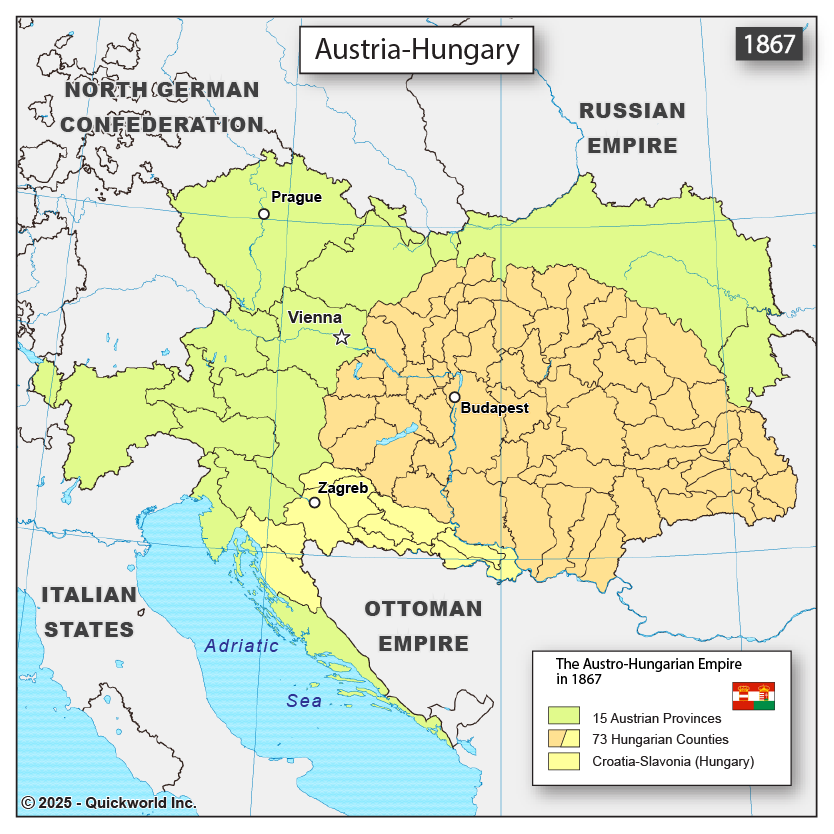While the Austrian monarchy was of German origin, the Austrian Empire was composed of many nationalities. The great nationalist awakening that took Europe by storm in 1848 left the Empire on the defensive, with a strict military regime that was very unpopular with the non-German populations. The largest of them, the Hungarians, fought for greater autonomy and obtained a partition of the Empire into two distinct entities in 1867. The Hungarian part included all the former lands of the Kingdom of Hungary, including the newly formed Kingdom of Croatia-Slavonia that enjoyed a degree of autonomy. The Austrian part was broader and more diverse: in addition to the German lands in the West, it included Bohemia, Moravia, Galicia, Bucovina in the North-East, Slovenia and Dalmatia in the South-East, mostly populated with Slavic populations. Since the border followed the Leitha River over a short distance East of the capital, Vienna, the entities were sometimes known as Cisleithania and Transleithania. The 1867 compromise left two confederated entities whose sole common institutions were ministries of defence, foreign affairs and finance. It lasted half a century, until the consequences of World War I reshaped the region drastically. The lands of the Austro-Hungarian Empire are now scattered across 12 countries. More on Austria-Hungary on Quickworld
Austria-Hungary in 1867


